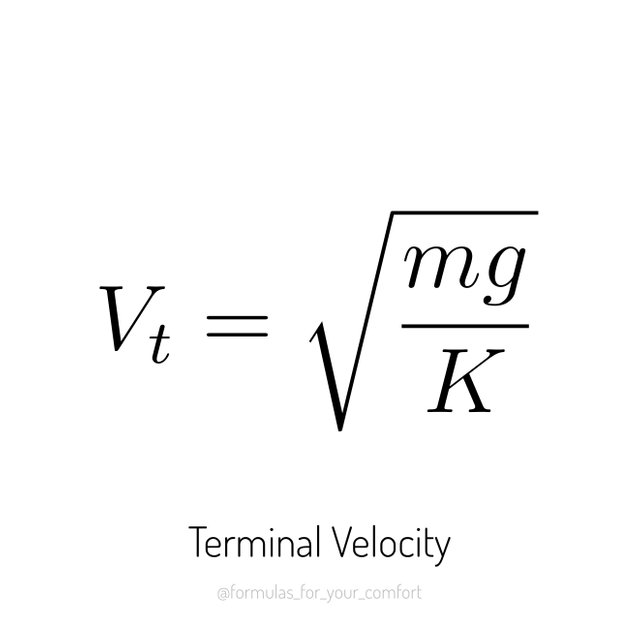Terminal Velocity : an explanation

You might've heard of the term terminal Velocity before, it refers to the maximum velocity that an object can achieve as it falls through a fluid (most of the time air ).
This happens when its speed is constant due to the restraining force exerted by the fluid through which it is moving, the downwards force of gravity will be compensated by the upwards drag force and buoyancy (which we've neglected in the above formula) .
As a falling object accelerates, its drag force grows, here the drag force is proportional to the square of its velocity by a factor K which depends on the fluid and the shape of the object.
This formula is obtained through Newton's second law, we consider 2 forces, gravity and drag. And there is no acceleration at terminal velocity.
For your information a skydiver typically falls at 200 km/h in a free-fall position with a half open parachute.
...
Don't hesitate to leave feedback or any advice !
For more @formulas or on Instagram formulas_for_your_comfort
Hi! I am a robot. I just upvoted you! I found similar content that readers might be interested in:
https://www.facebook.com/Formulasforyourcomfort/
Thank you, that is also my page.
Congratulations @formulas! You have completed the following achievement on the Steem blockchain and have been rewarded with new badge(s) :
Click here to view your Board
If you no longer want to receive notifications, reply to this comment with the word
STOPDo not miss the last post from @steemitboard: